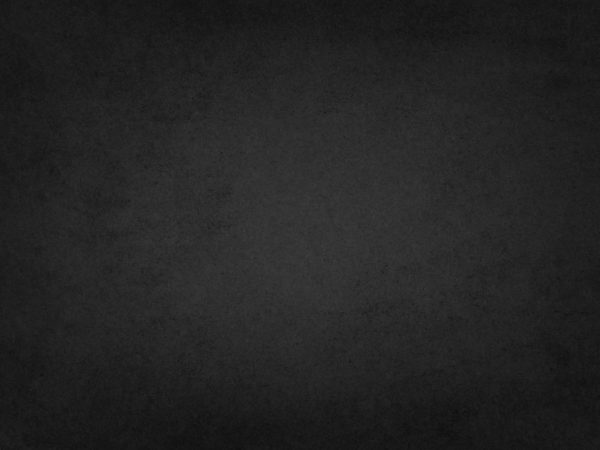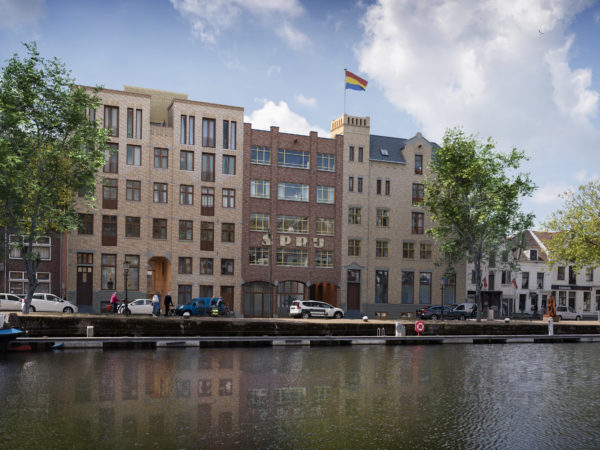De Herwaert
live, work, make and relax
- Rotterdam
- 30 apartments, 1200 m² GFA of commercial and community space
- 2024-2027
With De Herwaert, we are creating an informal, green, and safe connection between the Oude Westen neighborhood and the city center of Rotterdam. Stretching between the Westersingel and the Wijkpark, this pedestrian passage is open to all Rotterdammers. It links parks, squares, and spaces into a new natural route along primary schools, community care, a petting zoo, art, community centers, and small shops. This connection strengthens the local economy and provides a welcoming refuge for people, plants, and animals in the city. With a diverse program of creative spaces, work areas, daytime hospitality, and an accessible and varied housing program, De Herwaert offers a boost in quality for the city of Rotterdam.
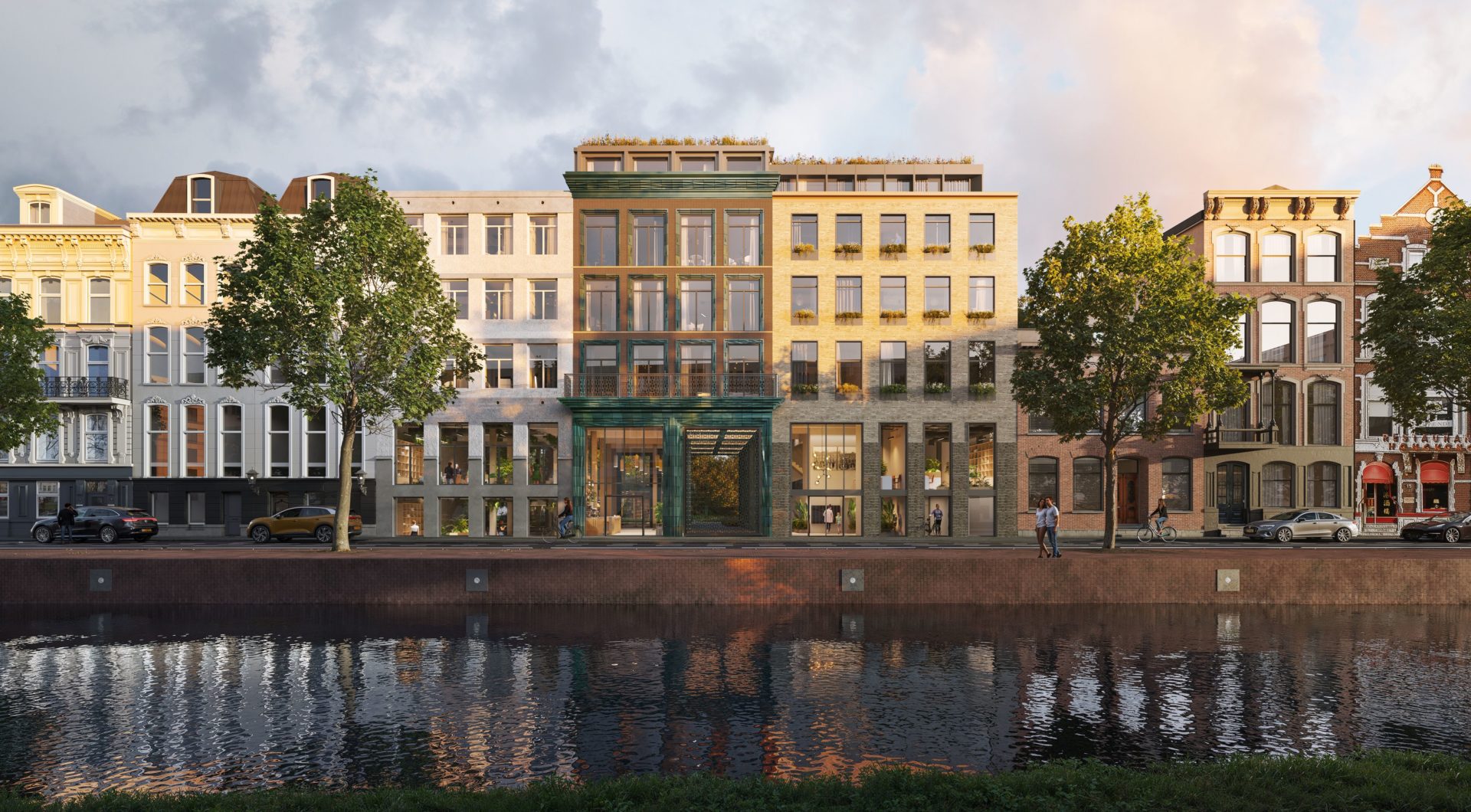
The transformation of the Westersingel 18-20 ensemble requires a layered approach, respecting the historical context and the protected cityscape. This way, we enhance the ‘golden edge’ of the Westersingel by translating the grandeur of the 19th century into contemporary architecture with three expressive façades. The central building is the most striking, featuring ceramic cladding. These sculptural decorations are 3D-printed by Studio RAP in Rotterdam using over 50% recycled materials.
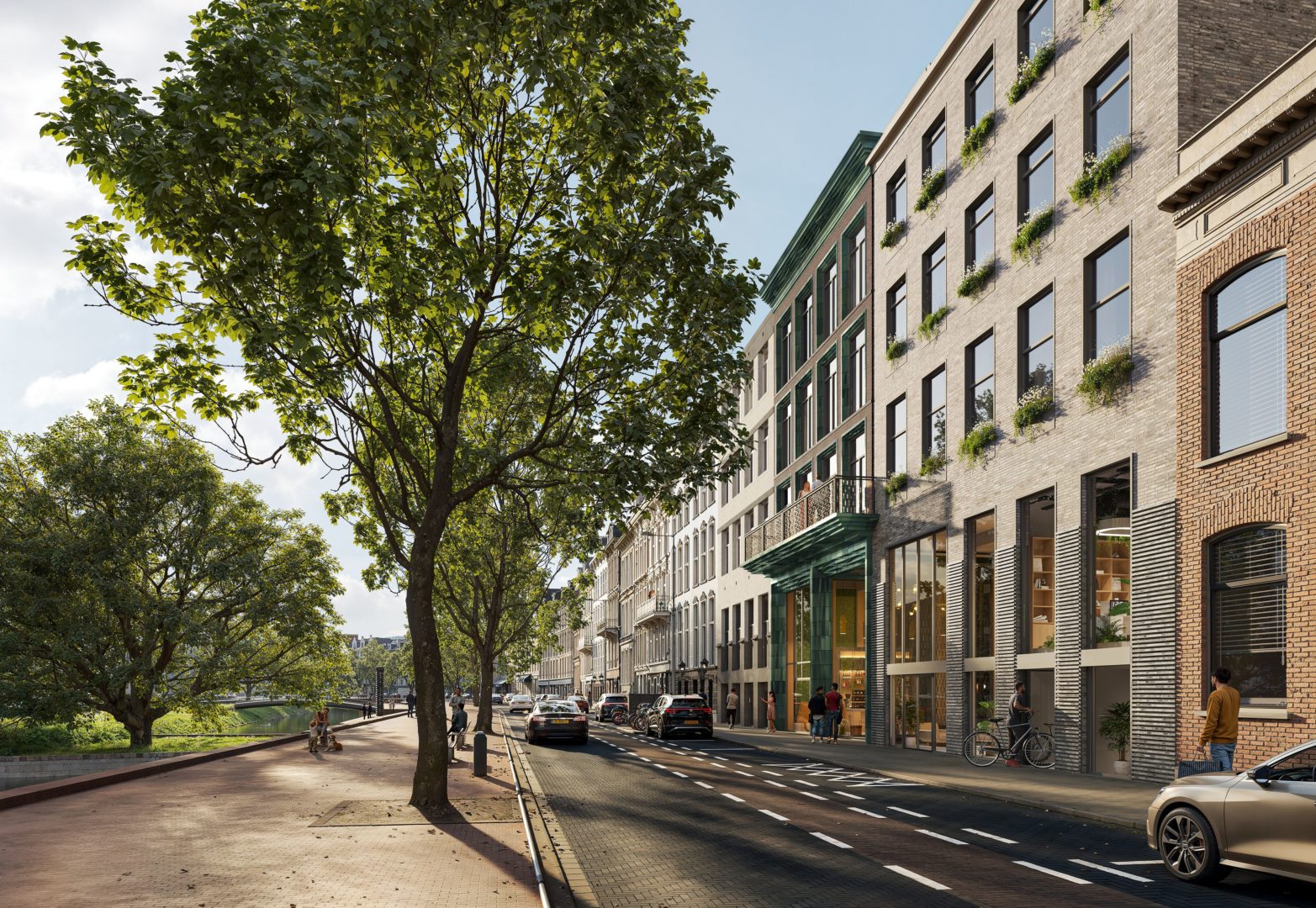
The façades along the golden edge also showcase a great diversity in materials. Through a carefully balanced combination of brick, stucco, polished concrete, and ceramic, De Herwaert presents a rich palette of materials, with each of the three buildings featuring a distinctive finish.
Set back and staggered in height, numbers 18 and 19 include rooftop extensions. The architecture of these extensions echoes the design of the façades below and aligns with the parceling of the buildings. The recessed placement of these extensions ensures a subtle integration into the overall design.
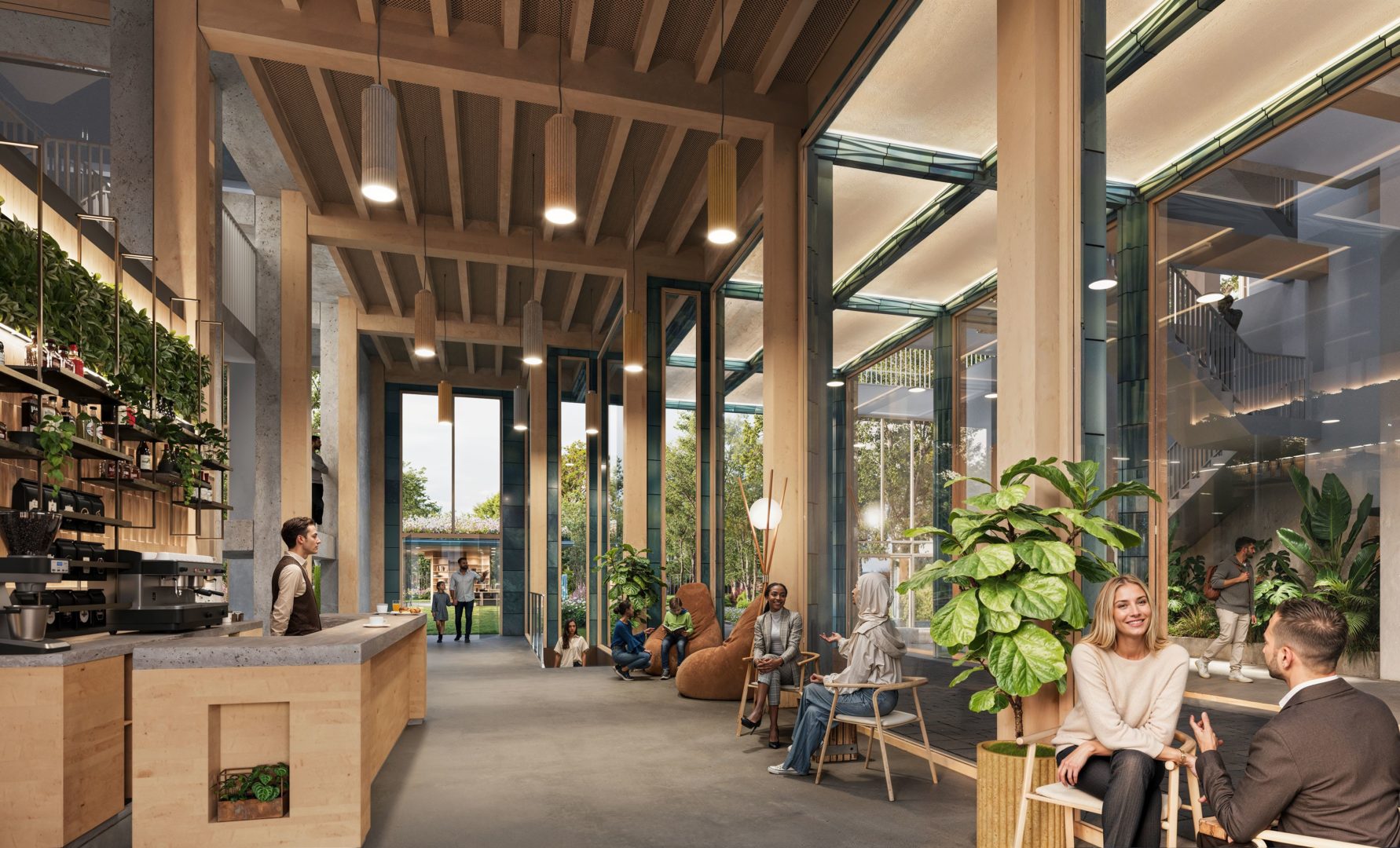
The transparent Herwaert Passage is where various connections visibly come together. Ceramic frames visually define the different spaces, offering views of the living room with daytime hospitality, the residential and work entrance, and providing a green vista of the garden, the pavilion, and the Wijkpark.
The richly decorated ceramic tiles on the Westersingel side feature abstract, water-inspired ornaments. These transition subtly toward the Wijkpark into nature-inspired abstract patterns. In the garden, ceramics also frame the unique elements. The same ornamentation used in the passage frames can be found on the pond edge, the pavilion’s roofline, and the columns of the gate to the Wijkpark.
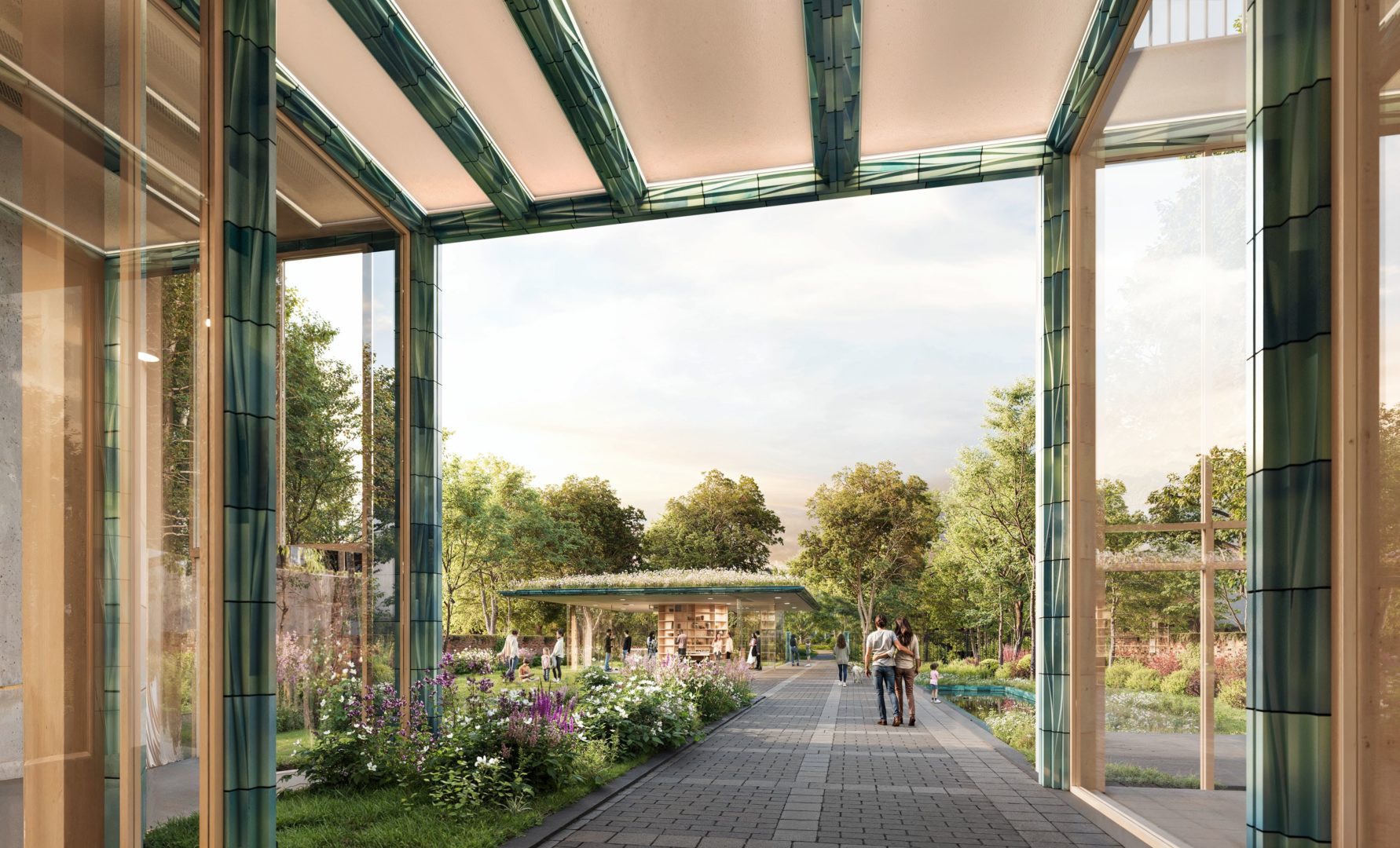
In the Herwaert Garden, we are creating the pavilion — a unique, transparent building oriented toward the garden, the passage, and the Wijkpark. The pavilion is connected to the basement, together forming the domain of De Makerij. De Makerij will launch a social ceramics workshop where students and individuals distanced from the labor market can experience creative craftsmanship. Courses will be taught by master ceramicists, who will also have their own workshop in the pavilion, with their works displayed in the central core.
The Herwaert Garden is designed with clarity and offers a lush, naturally cohesive setting, featuring typical elements of an enclosed garden: ivy-covered garden walls, an entrance gate, a classical axis, and a pond.
The Herwaert will play a vital role as a green link in the area. To achieve this, we are creating a high level of biodiversity on two levels in the Herwaert Garden. On the elevated sections where the landscape extends over the basement roofs, plant species suited to higher and drier conditions will grow. The lower section will function as a rain garden, featuring plant species that thrive in wetter conditions. The water system in De Herwaert includes multiple intelligent retention roofs (in the garden, on the pavilion, and the main building), which are weather-controlled. These roofs are connected to a retention pond.
In the transformation of Westersingel 18-20, we are preserving the qualities of the existing structures. By choosing a passage through the central building, the load-bearing structure and much of the concrete in the outer buildings remain untouched, ensuring maximum efficiency in material use.
Partners
-
Municipality:Municipality of Rotterdam
-
Urban and landscape design:ECHO Urban Design
-
Architect:Kraaijvanger Architects
-
Architect:Studio RAP
-
Construction:FULLSPEED Construction (FULLHOUSE Group)
-
Community space:De Makerij
